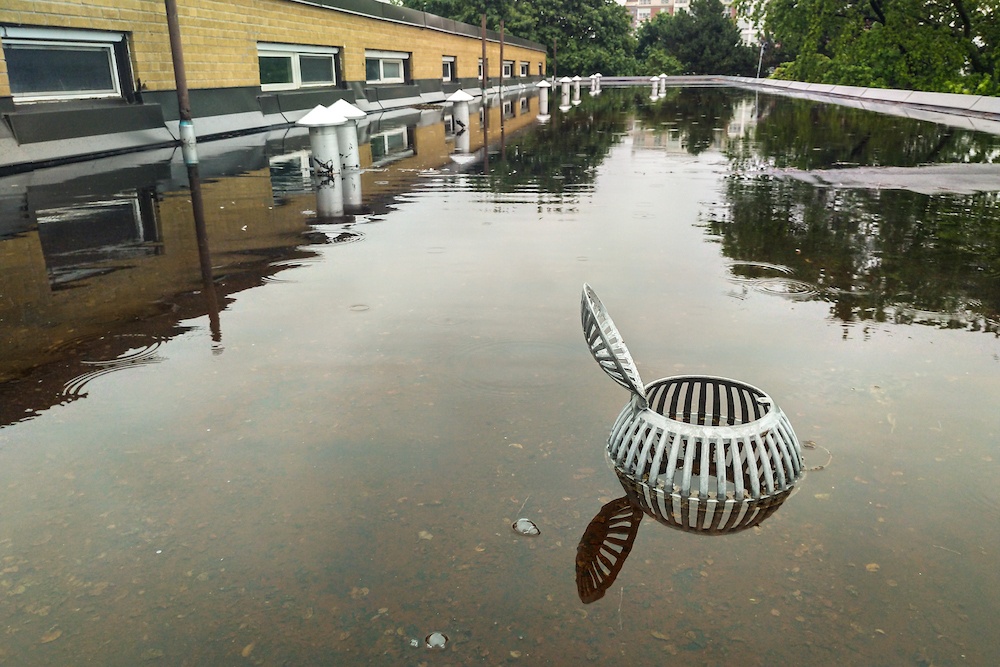When properly designed, most roofs – even flat roofs – have enough slope to drain water after a rain or snow event. Add to that the fact that evaporation helps to dry up roofs as well. So, if you have water that remains on a roof 48 hours after a rain, you can be pretty sure you’ve got “ponding water” and all that comes with it.
- Vegetation
- Insects
- Birds
- Discoloration
- Ice Damage
When left unaddressed, ponding water will eventually start breaking down your roof system and weakening its performance attributes. What other consequences can you expect from ponding water?

VEGETATION
Weeds, grasses, algae and other vegetation thrive from excess moisture on the roof, which can lead to debris that clogs roof drains and causes further problems.
INSECTS
Water attracts insects, plain and simple. Commonly it’s mosquitos, but depending on the part of the country you’re in, there can be many other types of bugs as well. Worst case is when these insects move from the roof to inside the building and your issues and costs to exterminate them grow dramatically.
BIRDS
Ponding water attracts birds, and likely accompanying the birds are nests, unwanted noise, excrement and debris.
DISCOLORATION
Ponding water will discolor a roof over time, particularly a white roof. This can cause a roof’s reflectivity to suffer and make any visible roof less attractive.
ICE DAMAGE
Ice formations from ponding water may develop and cause physical damage to the membrane from freeze-thaw cycles.
It’s always wise to schedule semi-annual inspections with a trusted roof technician. And while they’re there, make sure they not only assess your roof’s condition, but review the various options to remedy any problem areas, such as ponding water, before they worsen in both condition and cost to fix them


